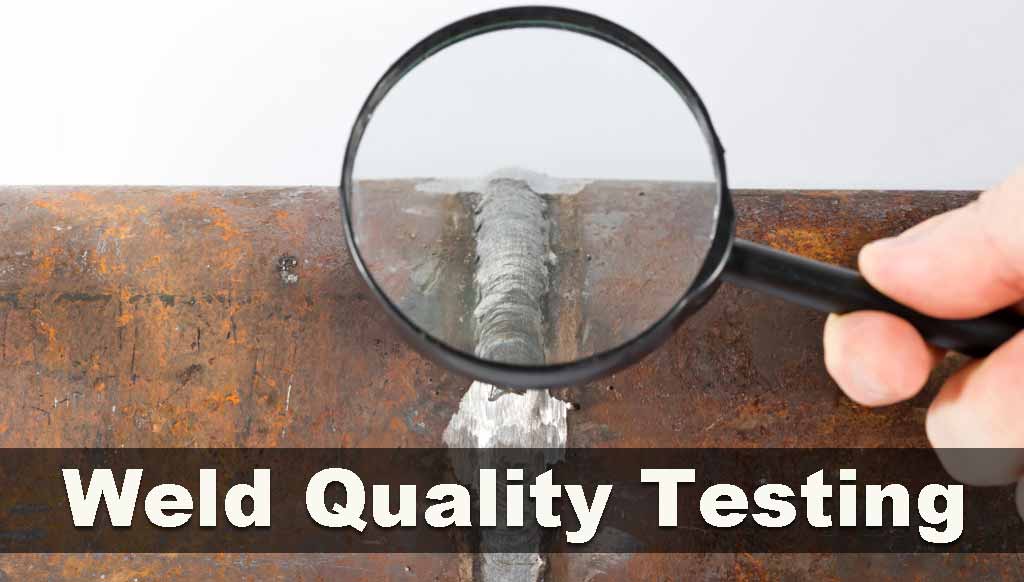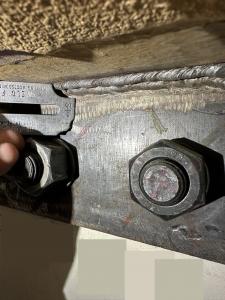Why Select Specialist Welding Inspection Gilbert Arizona for Your Projects?
Why Select Specialist Welding Inspection Gilbert Arizona for Your Projects?
Blog Article
Exploring the Relevance of Welding Examination in Industrial Applications: Guarding Against Failings and Enhancing Longevity
Welding examination serves as an essential line of defense in industrial applications, making sure the structural stability and integrity of welded elements. By methodically recognizing problems such as porosity and insufficient fusion, evaluations not just prevent failures but likewise expand the lifespan of necessary assets. Sticking to market criteria boosts both security and operational performance; however, the ramifications of disregarding these methods can be serious. As we check out the multifaceted benefits of routine assessments, it ends up being apparent that recognizing these dynamics is not just an issue of compliance but a critical imperative for longevity and risk mitigation.
Role of Welding Examination
Welding examination functions as an important guard in commercial applications, ensuring that welded structures fulfill specified criteria of high quality and safety. This process entails a methodical assessment of welds to verify their integrity, strength, and compliance with well established codes and requirements. The function of welding assessment is complex, including both aesthetic evaluations and non-destructive screening techniques, which might consist of ultrasonic, radiographic, or magnetic fragment screening.
Reliable welding inspection identifies possible concerns early, mitigating the risk of devastating failures that can develop from insufficient welds. By making certain that welds are implemented according to develop specifications, inspectors add to the total architectural dependability and long life of components in crucial applications, such as stress vessels, pipes, and structural frameworks.

Usual Welding Issues

One of the most widespread flaws is porosity, identified by little gas pockets caught within the weld metal. This occurs due to contaminants or improper shielding gas, endangering the weld's toughness. An additional considerable flaw is incomplete fusion, where the weld metal fails to bond properly with the base product, possibly resulting in structural weak points.

Splits can likewise develop throughout or after the welding procedure, typically associated to thermal stresses or inappropriate cooling prices. In addition, undercutting, where the base steel is worn down along the weld bead, can damage the joint and is usually triggered by excessive warm input or incorrect strategy.
Additionally, lack of infiltration occurs when the weld steel does not reach the origin of the joint, bring about poor strength. Recognizing these typical defects is vital for assessors and welders alike to guarantee that welded structures satisfy security and efficiency standards, eventually protecting against prospective failings in industrial applications.
Advantages of Regular Inspections
Regular examinations function as an essential secure in ensuring the dependability and long life of bonded structures. These analyses identify prospective issues and weaknesses that might compromise the stability of welds, permitting prompt remediation before problems intensify. By applying an organized evaluation routine, companies can significantly decrease the danger of tragic failings that may bring about costly downtime, equipment substitute, or even mishaps.
Additionally, normal inspections add to enhanced quality assurance throughout the welding procedure. By sticking to a regular examination timetable, firms can guarantee that their welding practices satisfy well established top quality standards and finest methods. This not just promotes a culture of responsibility but additionally urges continuous enhancement among welding personnel.
Furthermore, regular inspections assist in much better maintenance planning. By determining deterioration early, organizations can tactically schedule repairs and replacements, decreasing disturbance to operations. This positive strategy inevitably brings about extended property lifespan and improved total performance.
Last but not least, a commitment to normal assessments can enhance a business's track record in the market. Stakeholders and customers increasingly worth organizations that prioritize safety and security and top quality, consequently boosting trust fund and possibly leading to boosted service chances.
Sector Criteria and Regulations
Complying with sector requirements and regulations is an essential facet of welding evaluation that matches the benefits of regular analyses. These criteria, developed by organizations such as the American Welding Society (AWS) and the American Culture of Mechanical Designers (ASME), offer a framework for ideal practices in welding procedures, materials, and assessment methods. Conformity with these policies guarantees that welds fulfill the called for quality and security benchmarks, dramatically lowering the threat of structural failings.
Governing bodies like the Occupational Security and Wellness Management (OSHA) better enforce guidelines that secure workers and the setting throughout welding operations. By adhering to these established standards, sectors can enhance the integrity of content their structures and elements, guaranteeing they perform as intended under different operational conditions.
Furthermore, adherence to sector requirements promotes consistency in quality assurance, helping with smoother interaction amongst stakeholders and governing companies. This alignment not just reduces responsibility risks however additionally boosts the trustworthiness of organizations in competitive markets. Welding Inspection Gilbert Arizona. Eventually, conformity with welding requirements and policies is not merely a legal commitment; it is an essential investment in safety and security, efficiency, and lasting operational success
Future Trends in Welding Assessment
As sectors remain to progress, the future of welding inspection is positioned to incorporate innovative modern technologies that boost accuracy and effectiveness. One important site of one of the most considerable patterns is the adoption of automation and robotics in examination processes. Automated systems can perform inspections rapidly, reducing human mistake and boosting throughput in manufacturing settings.
Furthermore, the assimilation of artificial knowledge (AI) and equipment knowing formulas will certainly allow predictive analytics, allowing for real-time evaluations and aggressive maintenance. By assessing data from previous inspections, these technologies can determine patterns that can show prospective failures, consequently extending the lifespan of bonded elements.
In addition, non-destructive testing (NDT) methods are anticipated to end up being a lot more sophisticated, making use of tools such as drones and self-governing vehicles outfitted with sophisticated sensing units. Welding Inspection Gilbert Arizona. These advancements will boost the capability to inspect hard-to-reach or dangerous areas without jeopardizing safety and security
Additionally, the pattern towards digitalization will result in enhanced data administration systems that assist in better tracking, reporting, and compliance with industry criteria. In recap, the future of welding inspection is defined by technical improvements view it now that guarantee to substantially enhance integrity, safety and security, and functional efficiency in different industrial applications.
Final Thought
Finally, welding inspection serves an essential feature in making certain the honesty and toughness of welded structures throughout various industrial applications. By recognizing flaws such as porosity and insufficient combination, routine examinations play a substantial function in threat mitigation and high quality guarantee. Adherence to sector requirements and guidelines better enhances functional safety and security and integrity. As innovations in modern technology remain to progress, the future of welding inspection guarantees raised accuracy and performance, ultimately adding to the durability of essential frameworks.
Welding assessment serves as a vital line of protection in commercial applications, making certain the architectural stability and integrity of bonded components.Welding inspection offers as an essential safeguard in commercial applications, making certain that welded structures meet defined standards of quality and safety and security. Eventually, the duty of welding assessment is crucial in promoting safety and security, enhancing efficiency, and safeguarding investments in industrial framework.
These criteria, established by organizations such as the American Welding Society (AWS) and the American Society of Mechanical Designers (ASME), supply a framework for finest methods in welding processes, materials, and examination strategies.In verdict, welding inspection serves an important function in making sure the honesty and resilience of bonded frameworks across numerous industrial applications.
Report this page